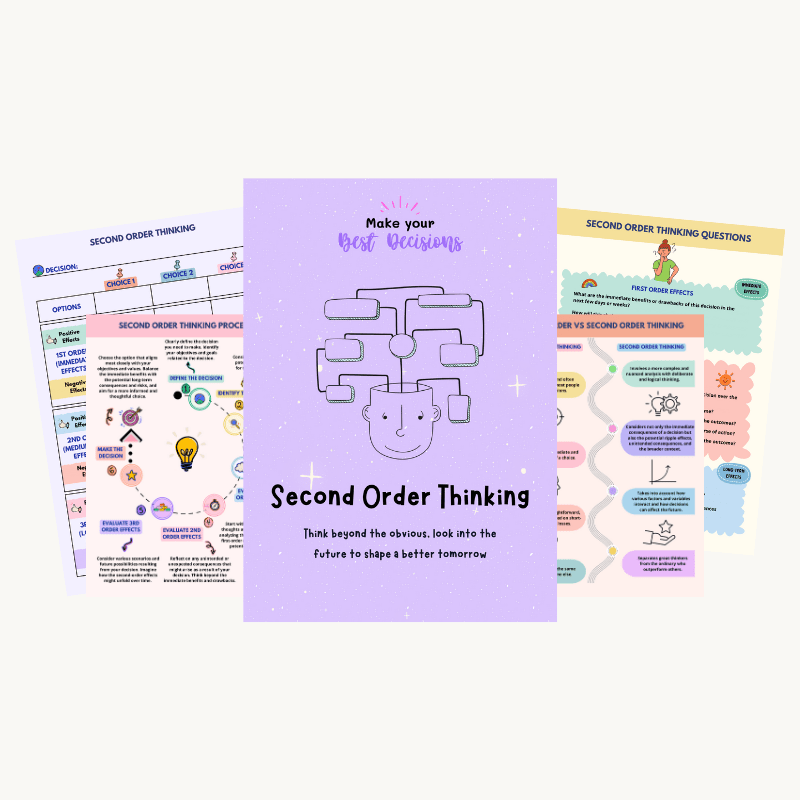Leadership Practices That Leave a Mark

Leaders are admired for their intelligence, knowledge, experience and ability to make tough decisions under difficult circumstances, but none of them leave a lasting imprint on those they lead. They’re not remembered for their achievements or the outcomes they achieved, but for the way they shaped culture, influenced others and how they paved the way for others to succeed.
Leadership is more than a role and a title. It‘s more than the short-term victories, inspiring speeches or the success stories. True leadership involves lifting others up in a way that outlives your presence—by inspiring confidence, fostering growth and leaving behind a stronger, more capable team.
The most significant contributions leaders make are not to today’s bottom line but to the long-term development of individuals and institutions that adapt, prosper, and grow.
— James M. Kouzes & Barry Z. Posner, A Leader’s Legacy
True leadership is one that resonates and endures well into the future. Here are the 5 leadership practices that truly leave a mark.
Creating an army of independent thinkers, not followers
Some leaders lead from the front, expecting everyone to follow from behind. They do all the thinking, leaving no use for their team’s brain cells.
These leaders create executioners—when faced with a challenge or an obstacle, people wait for instructions, cry for help and stay blocked because they don’t know how to solve problems on their own or make progress.
On the other end are leaders who lead from the side. They walk along with their people, guiding and coaching them along the way as they learn to question, challenge ideas and put their creative thinking skills to use.
These leaders create strategists—people who take responsibility, drive decisions, think ahead and generate ideas rather than just executing them.
Developing people requires empowering them to make decisions on their own, not subjecting them to decisions that someone else makes for them. Every small opportunity where they’re encouraged to put their thinking skills to use builds their confidence. Every new challenge increases their ability to navigate complex problems, deepens their problem solving skills and builds resilience.
Over time, this consistent practice shapes them into independent, capable individuals who trust their own judgment and take initiative to drive progress and solve problems effectively.
Leaders are not remembered for their intelligence, but how they cultivate and bring out the intelligence in others. They leave a mark by creating an army of independent thinkers—people who challenge the status quo, explore unique solutions and aren’t afraid to take a stand or make tough decisions.
A culture of thinking produces the feelings, energy, and even joy that can propel learning forward and motivate us to do what at times can be hard and challenging mental work.
— Ron Ritchhart, Creating Cultures of Thinking
Leave your mark as a leader by promoting a culture of thinking and independent decision-making—ask questions, challenge them to step outside their comfort zone and make connections by drawing insights using cross-disciplinary thinking.
Leaning into mistakes instead of turning to criticism or ignorance
Leaders who treat mistakes as a sign of incompetence, laziness or weakness create a culture of fear where team members are afraid to take risks, share ideas or explore unconventional paths.
Instead of encouraging open discussions or asking thoughtful questions to uncover the underlying root cause of error, they resort to blame—blocking opportunities to learn from failure. They don’t practice openness or show patience and tolerance for mistakes. This creates a work culture where admitting mistakes becomes synonymous with taking the blame.
Fear of reprisal makes people choose safety over growth—they give up on opportunities, choose safe options and try to avoid mistakes at all costs.
Leaders who treat mistakes as a learning experience turn it into a teaching moment—what went wrong, what assumptions were made, what was missed and what could be done better next time?
They focus more on pivoting—trying new strategies, exploring alternative solutions and experimenting—instead of wasting time ruminating about the mistake and finding who to blame.
They hold people accountable without making them feel small or the need to cover up the mistakes when they do happen. They convey a simple message—the path to success goes through failure. It’s scattered with mistakes, both big and small, and when confronted with challenges, everyone must step up to emerge on the other side stronger and more confident.
This mindset creates a culture of psychological safety, continuous learning and improvement—where people aren’t afraid to take risks, own their actions and grow by embracing feedback, reflecting on setbacks and applying lessons to future challenges.
Leaders are not remembered for playing safe, hiding mistakes or always succeeding. They are valued for accepting failures, destigmatizing mistakes and turning setbacks into opportunities for growth.
Being wrong won’t always be joyful. The path to embracing mistakes is full of painful moments, and we handle those moments better when we remember they’re essential for progress. But if we can’t learn to find occasional glee in discovering we were wrong, it will be awfully hard to get anything right.
— Adam Grant, Think Again
Leave your mark as a leader by creating an environment where mistakes are seen as opportunities for growth, not failures to be punished—where people feel safe to learn, adapt and push boundaries with confidence.
Multiplying team’s intelligence and talent, not diminishing it
Some leaders are diminishers. They are very smart, but they also have a way of shutting down people around them. They kill other people’s ideas, suck their energy and hog the limelight for themselves instead of putting the spotlight on others. They have an answer for everything, are strongly opinionated and dominate space and energy, leaving no room for others.
They are so absorbed in their own intelligence—trying to be the smartest, most capable person in the room—that they stifle other people’s intelligence and capability. They keep the smartest people close but underutilize their potential, thereby making them feel overlooked and disengaged. They use intimidation, pressure and dominance to control, making people operate in survival mode. They constantly intervene, review and correct others’ work, reducing ownership, creativity and confidence in them.
The Diminisher’s view of intelligence is based on elitism and scarcity. Diminishers appear to believe that really intelligent people are a rare breed and that they are of that rare breed. From this assumption they conclude that they are so special, other people will never figure things out without them. Diminishers’ two-step logic appears to be that people who don’t “get it” now, never will; therefore, I’ll need to keep doing the thinking for everyone. In the Diminisher world, there is no vacation for the smart people!
— Liz Wiseman, Multipliers
Other leaders are multipliers—they grow other people’s intelligence by engaging with it. These leaders do not try to be the center of attention or worry about how smart they look. Rather, they extract the smarts and maximum intelligence from each of their team members. They bring out the intelligence in others and create collective, viral intelligence in their organization.
Multipliers amplify the intelligence, energy and capability of people around them—by pushing others to do hard things beyond their current capability, spotting and cultivating their strength, they make them feel valued and challenged. They create a culture of high engagement, innovation and performance—where everyone gets smarter and more capable over time.
Leaders are remembered not for how smart they were, but for how they elevated the people around them. True leadership lies in amplifying the intelligence and potential of others—creating a lasting impact through the multiplier effect, not individual brilliance.
Multipliers make everyone around them smarter and more capable. Multipliers invoke each person’s unique intelligence and create an atmosphere of genius—innovation, productive effort, and collective intelligence. Multipliers get more from their people because they are leaders who look beyond their own genius and focus their energy on extracting and extending the genius of others. And they don’t get just a little more back; they get vastly more. Multipliers not only access people’s current capability, they stretch it. They get more from people than they knew they had to give.
— Liz Wiseman, Multipliers
Leave your mark as a leader by lifting others up, not diminishing them. It’s not your individual smartness, but the multiplier effect on human potential that counts.
Encouraging a collaborative mindset, not limiting to team boundaries
Some leaders place artificial boundaries on their teams—limiting team members to what they can and cannot do. They tell their team members to focus on their own tasks and not waste time in solving others’ problems or helping them out. This breaks down collaboration where people are required to cooperate, work together and achieve common goals as a team. When everyone keeps focusing on their own part without care for how it all fits into the big picture, the end result is always a mess.
Not giving and getting support at the right time delays projects as people waste time being stuck instead of seeking help and moving forward. Working in silos also leads to misalignment of expectations, wrong assumptions and misunderstandings, which when not identified and corrected early can lead to a lot of rework, frustration, resentment and burnout.
Creating a culture that values individual performance over teamwork gives way to complaining, blaming and sobbing when things don’t work out as expected—everyone thinks someone else must be the problem if they did their part of the job.
There are also leaders who not only define a common measure of success, but also encourage their people to work together, help each other and achieve outcomes as a team.
These leaders understand that siloed thinking and execution is a barrier to achieving shared goals. To move fast, team members need guidance and support from each other. This makes them actively promote collaboration and drive a sense of collective ownership across the organization.
Leaders are remembered for uniting people, not dividing them. Giving freedom to your team to go above and beyond their assigned tasks is a smart strategy, because it not only makes them achieve more, but being able to contribute without bounds is more satisfying and fulfilling.
We cap our ability to succeed when we work solo. When we come together, we multiply both ideas and effort; we increase the capacity to succeed.
— Dele Ola, Pursuit of Personal Leadership
Leave your mark as a leader by utilizing the collective power of the group—more brains can lead to better problem solving, learning and increase the motivation to achieve excellence as a team.
Embracing change as a strategy, not an ad hoc event
Some leaders resist change because it brings a lot of ambiguity, uncertainty and the risk of falling short by not meeting expectations.
These leaders put off change by actively avoiding it till it can’t be ignored, but delaying change makes it harder to embrace and implement. The lost opportunity turns into a burden as teams are rushed and pushed to do the work of weeks in days.
Not being mentally prepared to handle change also makes people resistant, angry and ineffective—they feel forced into a decision because no one takes the time to explain the rationale or deal with questions necessary to make sense of the chaos they’ve been asked to handle.
Another type of leader actively prepares for change by looking into the future and its needs. They understand that change is not only inevitable, it’s the only way to stay relevant, foster innovation and ensure long-term success.
Shifting markets, evolving technologies and the growing expectations of both employees and customers require change to be part of a leader’s strategy and not something to be dealt with when it’s too late. Proactive thinking and action on this front can be the difference between building an organization that withstands disruption and one that falls behind in the face of progress.
Leaders are remembered for facing change with courage and resilience, not for ignoring it, avoiding it and struggling to adapt because they failed to act when it mattered most. Good leadership demands turning uncertainty into opportunity and guiding others with clarity and confidence along the way.
Whenever smart and well-intentioned people avoid confronting obstacles, they disempower employees and undermine change.
― John P. Kotter, Leading Change
Leave your mark as a leader by embracing change and leveraging it to make it your advantage; resisting progress is a disaster, as you risk being left behind while the world moves forward.
Summary
- Very few leaders are remembered long after they’re gone. They may be admired for their knowledge, skills and experience, but that admiration is short-lived. The only thing long-lasting are the values they leave behind while building people and the culture.
- Leaders aren’t remembered for telling their team what to do or doing all the thinking for them, they leave a mark by building teams that are empowered to think on their own.
- Leaders aren’t remembered for trying to avoid mistakes at all costs, they leave a mark by turning failures and mistakes into learning lessons.
- Leaders aren’t remembered for proving their intelligence and smartness, they leave a mark by amplifying the collective intelligence of their group.
- Leaders aren’t remembered for promoting individual performance, they leave a mark by encouraging collaboration and utilizing the combined power of the group.
- Leaders aren’t remembered for maintaining the status quo or doing things the way they’ve always been done, they leave a mark by proactively adapting to the future and its needs.


































